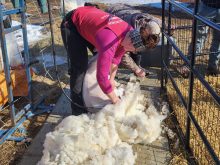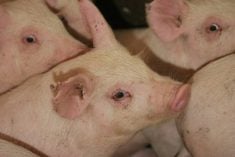RED DEER – The director of Alberta’s cows and fish program has spent the last 10 years watching community groups take back their lake shores and river banks.
Greg Hale says the program, which was started 10 years ago as a response to the sorry state of creeks in southwestern Alberta, has been a rousing success.
Speaking during a recent conference on riparian rehabilitation, Hale said the program has improved water quality and brought back green zones.
Sponsored chiefly by the Alberta Cattle Commission and Trout Unlimited, the program has a distinctly agricultural focus.
Read Also

Charges laid after cattle theft
Saskatchewan RCMP lay two charges against a man after six cattle went missing.
But Duncan Patten of Arizona State University said farmers aren’t the only culprits.
While cattle are visible as they trample banks and wade into streams, Patten said logging, mining, gravel pits, road construction and urbanization are equally culpable.
These activities often dam rivers and change water drainage patterns.
Hale said many problems also occur because people and animals choose to live near water.
“People love it to death if it is not managed properly,” he said.
A livestock producers guide to riparian health was recently released to help people assess their own areas.
Among the recommended strategies is the removal of livestock from shorelines and the planting of trees like willows and cottonwoods.
Grass and tree roots are important to river banks, Hale said, because they hold the banks together and stop erosion.
Results are quick, he added, as was seen by the community of Dogpound northwest of Calgary.
Landowners undertook a major stream bank fencing project in the late 1980s to keep their cattle out of waterways.
Landowners decided where to put the fences with help from the Alberta Conservation Association and Fish and Wildlife, a not-for-profit society that the government has contracted to handle projects like the Dogpound fencing scheme.
Jay Wieliczko, of the association, said 90 kilometres of fence on 40 quarters of land protect 50 km of Dogpound Creek.
Sites at certain points in the stream were established for livestock watering.
Funds to support the project come from hunting and fishing licence fees.
In addition to the fencing, crib walls were installed in some areas where stream banks were badly eroded and willows were planted to anchor the banks.
Results were immediate.
Wieliczko said the brown trout population has increased and landowners have reported more pasture, noticeably better water quality, more forage, reduced flood damage and reduced illness and injuries among livestock.

















